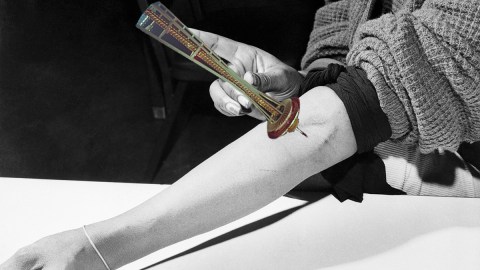Why Seattle’s Plan to Help Heroin Addicts Isn’t Crazy

Seattle has a heroin epidemic. More people in the city and its surrounding county enter detox for heroin than alcohol, according to the Seattle Times. Heroin overdose deaths are climbing, especially among homeless people. That’s why the city created a task force to address the problem.
Its solution? Letting addicts shoot up legally.
It’s not as crazy as it sounds. Giving addicts safe, clean places to shoot up decreases the risk of infection, contamination, and death. Those places will be called safe consumption facilities. Drugs will not be provided, but addicts will receive clean needles and syringes. They will also be able to “take other addictive drugs under the supervision of trained authorities,“ reports The New York Times.
The idea isn’t new. Vancouver has had a safe-injection site since 2003, and it was also opened to help stem an overdose epidemic. Cities in Australia and the Netherlands have also had similar programs. Seattle already has a needle exchange program, so a safe consumption facility is a natural next step. That’s most likely why the task force endorsed the plan today.
Another benefit to safe consumption centers is that they could become a gateway for addiction treatment and even primary medical care. They are better options than methadone clinics, as University of Washington researcher Caleb Banta-Green explained to the Seattle Times: “Methadone-treatment centers are limited to 350 total patients by state law. Doctors may prescribe [buprenorphine] in their offices, but they need a special license and the number of patients any one doctor can treat is capped at 100.”
While all of these benefits seem theoretical, Seattle does actually have a real-world example to follow: Portugal. 16 years ago Portugal decriminalized possession of all drugs, including heroin, as
VICE News reports. Critics of the plan expected overdoses to spike. They did not. 1% of Portugal’s population abused heroin in the late 1990s. Today, only 0.50% are abusing heroin, and most of them are seeking treatment. Better yet, overdose deaths decreased from 80 people per year to 16. That makes Portugal’s drug-induced death rate only 3 per million residents, almost 6x less than the EU’s. That’s also far less than America’s, where 14,000 people died from prescription overdoses in 2014 alone, according to the Center for Disease Control and Prevention.
Those results are staggering. While Portugal’s free healthcare system and smaller population make that kind of plan too simplistic to replicate wholesale in the US, there are still valuable lessons. “In a society where drugs are less stigmatized, problem users are more likely to seek out care,” VICE concludes. “Police, even if they suspect someone of using drugs, are less likely to bother them.” Seattle’s Mayor Ed Murray agreed with that sentiment, speaking a press conference earlier this year: “We can make a significant impact on homelessness if we make an impact on addiction.”
Both of these statements reveal the same conclusion: addiction is the real problem. Not the addict. And it can be overcome. Neuroscience journalist Maia Szalavitz explains how:





